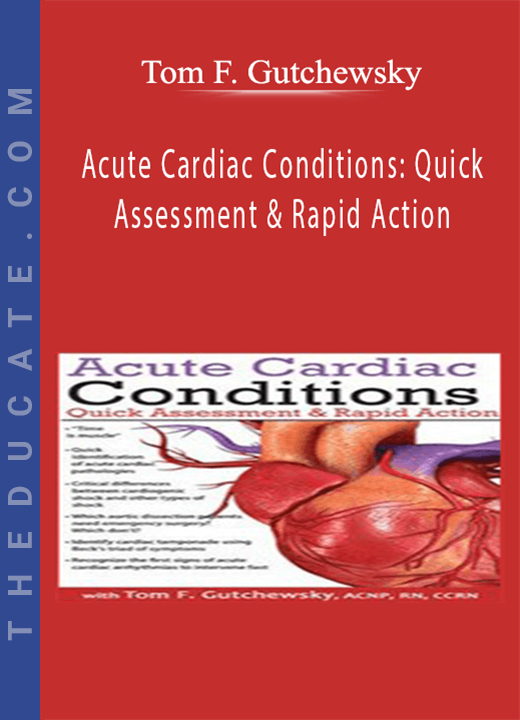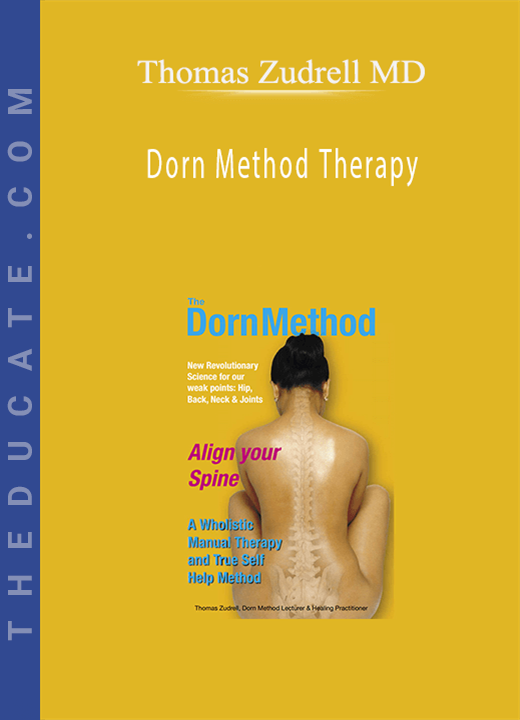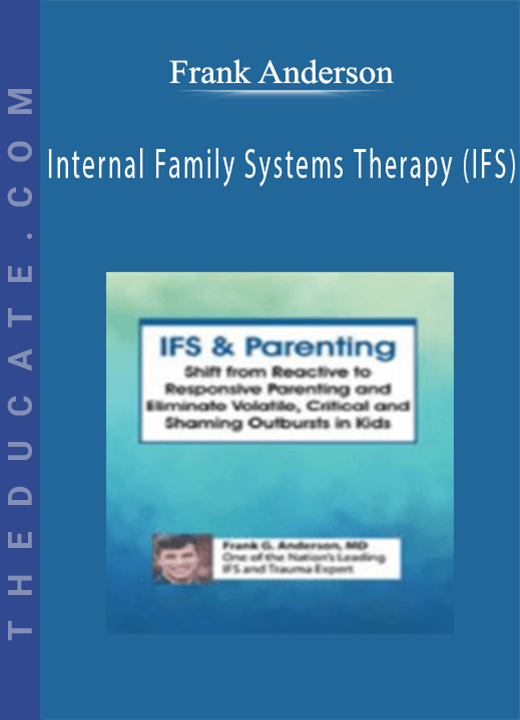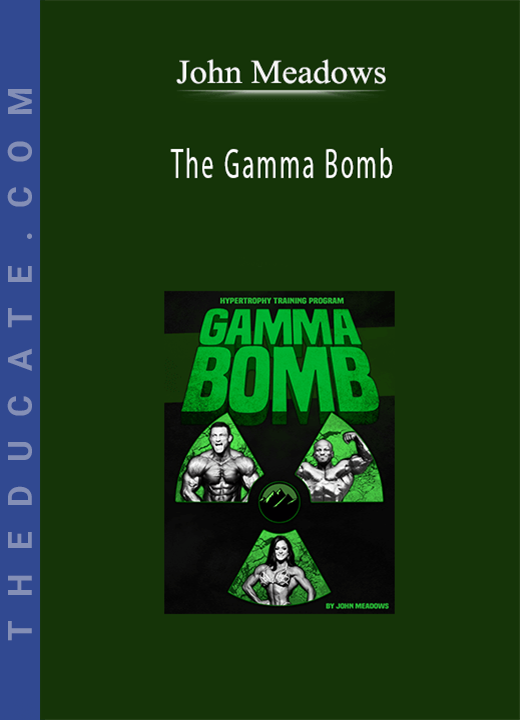Description
Acute Cardiac Conditions: Quick Assessment & Rapid Action – Tom F. Gutchewsky
- “Time is muscle”
- Quick identification of acute cardiac pathologies
- Critical differences between cardiogenic shock and other types of shock
- Which aortic dissection patients need emergency surgery? Which don’t?
- Identify cardiac tamponade using Beck’s triad of symptoms
- Recognize the first signs of acute cardiac arrhythmias to intervene fast
You’re caring for a stable patient when suddenly she develops tachycardia and hypotension as well as complaints of pain. All are symptoms consistent with acute coronary syndrome, early shock, aortic dissection, tamponade, and various arrhythmias. Which is it?! Acute patient changes require quick assessment and rapid action.
With a thorough understanding of cardiac anatomy and physiology, you can utilize your knowledge in identifying presenting and evolving symptoms, as well as knowing potential risk factors for common pathologies. Fascinating case studies will be used to assist in making the right decisions. This knowledge will allow you to react appropriately and not panic, returning to work with the ability to more quickly determine a differential diagnosis and best prepare patients and families on the expected interventions and course of treatment.
OUTLINE
Acute Cardiac Pathology
- Differentiate between an ST elevation MI and a non ST elevation MI
- What about the presentation based on different coronary vessel involvement?
- Review angiogram films to identify specific pathology including culprit vs. chronic lesions
- When are thrombolytics appropriate?
- When should an invasive procedure like angioplasty or stenting be performed?
- When to refer to surgery – including timing of urgent and elective surgery
- See the changes of acute MV regurgitation caused by myocardial ischemia on echocardiogram
- MR treatments: Pharmacology? When is it time for surgery or catheter-based interventions?
- Find out how an intra-aortic balloon pump can stabilize a patient with ventral septal defect caused by MI prior to surgery
- Review which drugs are most beneficial for specific conditions and adhere to AHA recommendations
Cardiogenic Shock
- Understand the multiple causes of cardiogenic shock to identify early symptoms
- Compare the function of diagnostic techniques, including echocardiogram and swanganz catheters
- Gain insight into typical and more advanced treatments including fluid resuscitation, medication, interventions, intra-aortic balloon pumps, ECMO, and VADs
Aortic Dissection
- Stanford types A and B – including common causes, which patients are at risk, and typical presenting symptoms
- Review diagnostic techniques and images including echocardiogram, TEE, and CT scans for pathological findings
- Which patients require emergency surgery vs. medical management?
- Explore the latest surgical techniques used in treatment
Cardiac Tamponade
- Identify the symptoms of cardiac tamponade including the components of Beck’s triad
- Learn the causes of pericardial tamponade
- Review diagnostic echocardiogram and CT images
- Appropriate treatments including pericardiocentesis and pericardial window surgical procedures
Arrhythmias
- Identify acute cardiac arrhythmias including atrial fibrillation/flutter, 3rd-degree heart block and ventricular tachycardia by EKG findings
- Review common etiologies and risk factors
- Explore treatment options including medication, electricity, and ablation procedures
OBJECTIVES
- Analyze EKG, physiologic, vascular, and structural changes related to myocardial ischemia.
- Breakdown acute mitral regurgitation due to papillary muscle dysfunction, ventral septal defects, and the acute physiologic symptoms observed.
- Communicate acute cardiac interventions including pharmacological, percutaneous and surgical treatments.
- Point out the etiology and symptoms of cardiogenic shock and treatments utilized.
- Analyze Stanford type A and B aortic dissection and treatments for each including which type requires emergency cardiac surgery.
- Breakdown symptoms of cardiac tamponade and appropriate treatments.
- Evaluate acute cardiac rhythm changes, etiology, and treatments for each including pharmacological and invasive interventions.
Tag: Acute Cardiac Conditions: Quick Assessment & Rapid Action – Tom F. Gutchewsky Review. Acute Cardiac Conditions: Quick Assessment & Rapid Action – Tom F. Gutchewsky download. Acute Cardiac Conditions: Quick Assessment & Rapid Action – Tom F. Gutchewsky discount.







3 reviews for Acute Cardiac Conditions: Quick Assessment & Rapid Action – Tom F. Gutchewsky
There are no reviews yet.